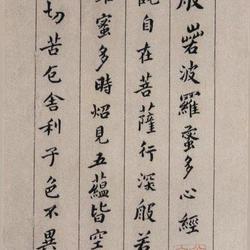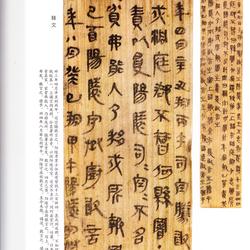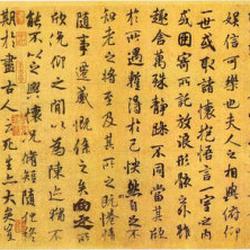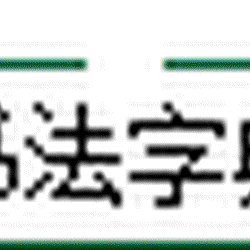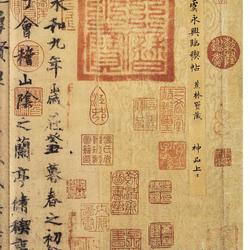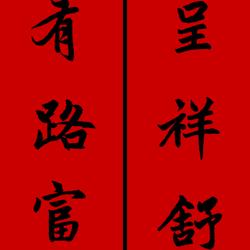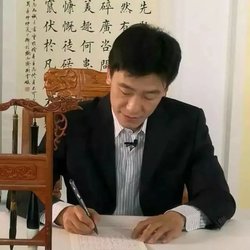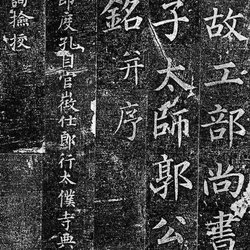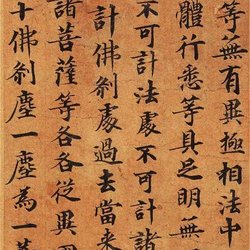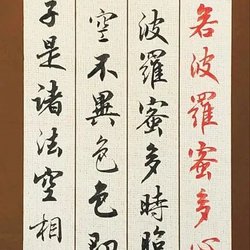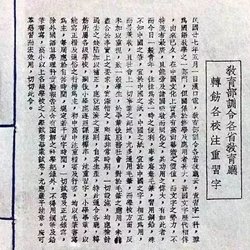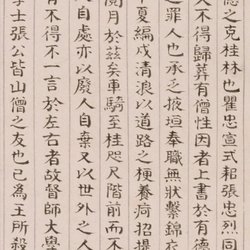Wen Zhengming (1470-1559), also known as Wen Zhengming, was originally named Bi, with the courtesy name Zhengming, and later changed to Zhengzhong, also known as Hengshan and Tingyun. He was a native of Changzhou (now Wuxian County, Jiangsu Province). His ancestral home is Hengshan, so he is called Hengshan Jushi. His family background is Wu Bian, and his grandfather Wen Xian was the first to show his talent. His father Wen Lin once served as the magistrate of Yongjia County in Wenzhou. He studied classics and poems since he was a child, and loved calligraphy and painting. Wu Kuan was a writer, Li Yingzhen was a calligrapher, and Shen Zhou was a painter. He was famous for his talents when he was young, and together with Zhu Yunming, Tang Yin and Xu Zhenqing, he was known as one of the "Four Talents in Wuzhong". However, the road to the imperial examination was very bumpy. From the age of 26 in Yimao of Hongzhi (1495) to the age of 53 in Renwu of Jiajing (1522), he failed in the examination ten times. It was not until the age of 54 that he was recommended to Beijing as a tribute student, waiting for the imperial edict. hospital. In the past four years, he witnessed official corruption and begged to return home again and again. At the age of 57, he returned to his hometown and devoted himself to poetry, calligraphy and painting. He is proficient in various painting techniques and is good at all kinds of fine and thick techniques. His eyesight and pen control ability are excellent. When he was over 80 years old, he could still write young regular script very fluently and never tired of it. In terms of painting, he co-founded the "Wu School" with Shen Zhou, and was also known as the "Four Schools of Wu" together with Shen Zhou, Tang Yin and Qiu Ying. In terms of calligraphy, he is known as one of the "Three Masters of Wuzhong" together with Zhu Yunming and Wang Chong.
Wen Zhengming's first calligraphy teacher was Li Yingzhen, and later he extensively studied the famous calligraphy of previous generations. He had various attainments in seal script, official script, regular script, running script, and cursive script. He is especially good at running script and small regular script. He is gentle and vigorous, rigorous in law and vivid in mood. Although it is not powerful and powerful, it has the style of Jin and Tang calligraphy and has its own certain style. The small regular script strokes are gentle and the rhythm is gentle, which is in harmony with his painting style. He is known as "the best in the Ming Dynasty".
"Returning to Xi Ci" page, Ming Dynasty, Wen Zhengming's calligraphy is famous for being good at all styles of calligraphy, especially good at running script and small regular script. Wang Shizhen commented in "Yiyuan Yan": "Wen Zhengming's calligraphy Small regular script is famous all over the world, and the ones it touches are Li Er. Seal script alone is not considered inferior to others, but it is also of high quality. The four-body "Qianwen" written in it is extremely fine in regular script, and has the writing style of "Huang Ting" and "Yi Jiao" , the body is green and moist, it can be called the jade version of "Holy Teaching", the official script also has the wonderful "Shou Zen" samadhi, the seal script is Jin Jinyang Bingmen Feng, and the regular script has small methods, which is precious."
Wen Zhengming's calligraphy is gentle, elegant, steady and mature, strict in rules and vivid in mood. Although it is not majestic, it has the style of Jin and Tang calligraphy. His writing style is less fiery, and he often reveals a gentle and elegant atmosphere in his joyful writing. Perhaps the ups and downs in his official career have sapped his youthful spirit, but his late blooming has made his style increasingly stable. Wen Zhengming was the leader of the Wumen School of Painting after Shen Zhou. He had many followers and disciples, forming the largest painting school in the Wumen area at that time.
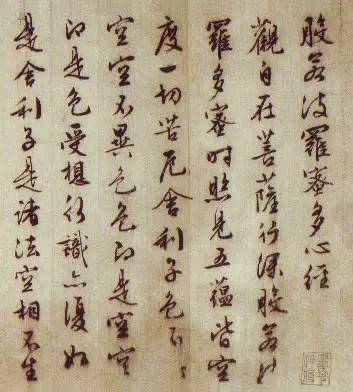
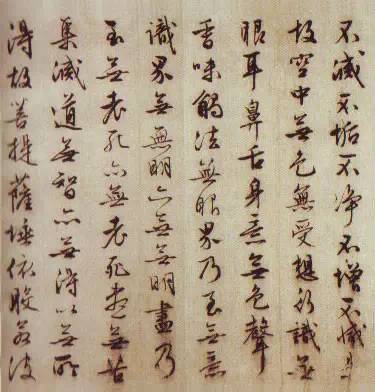
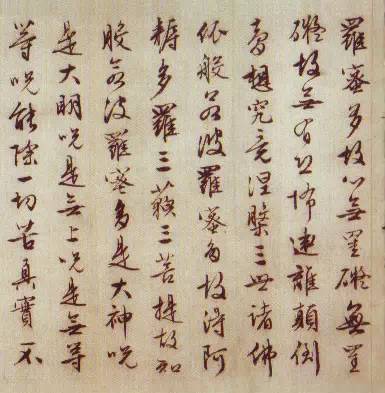
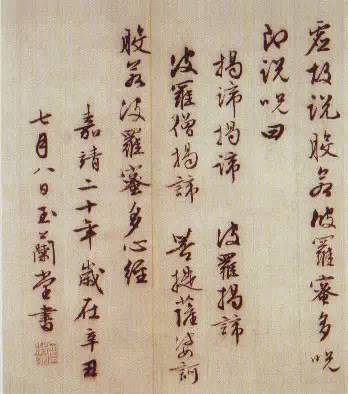
Wen Zhengming's eldest son Wen Peng was also a calligrapher and painter. His status in the history of Chinese printing is quite high.
Wen Peng [Ming Dynasty] was a calligrapher, painter, and seal engraver in the Ming Dynasty. (1498-1573) His courtesy name was Shoucheng, his alias was Sanqiao, and his alias was Yuyangzi. Sanqiao layman was born in Changzhou (now Suzhou, Jiangsu Province). He paid tribute to the emperor for a long time, taught him Xiushui's teachings, and promoted his country's sons to help the capital in Nanjing. Wen Zhengming’s eldest son. Shao inherited his family's learning, and was good at seal script, Fen, Zhen, Xing and Cao. He had a good body and style, and started his own family without following in his father's footsteps. His talent seems to be superior, but his work ability is far inferior to that of his father. He studied Zhong and Wang at the beginning, followed Huai Su in later years, and studied all in Ting in his later years, and was especially good at seal script and official script. There is a constant stream of people asking for books. His father was famous for his books, but sometimes he didn't like to read books, even though he was a powerful man, he didn't dare to force himself. Peng's hands kept waving, and all those who asked for help were heedless. The craftsmanship of engraving is regarded as a golden rule by later generations. The multi-tooth seals he made often fell off the ink and ordered Li Wenfu from Jinling to engrave them. Li Shan carved the borders of the scrolls, and the flowers he engraved were all exquisite and elegant. Peng used seals to attach them, and he could always keep the meaning of the brushwork, so the tooth seals were half out of Li's hand. Empress Peng got the lamplight stone when she was in Nanjian, but she no longer treated her teeth, so the name of frozen stone became famous in the world. Writing in ink bamboo, the old pen is vertical and horizontal, going straight into Wen Tong's room. The mountains and rivers are green and green, just like Wuzhen. He is also good at writing about flowers and fruits. He died at the age of seventy-six. "Ming History Wen Hui Ming Biography, Ming History Art and Literature Chronicles, Continuation of Wen's Genealogy, Praise to the Philosophers in Wuzhong, Records of Ming Paintings, History of Silent Poetry, Continuing Compilation of Pictures and Paintings by Baojian, Summary of the History of Painting, Zhan's Essays, Coral Net, Style" "An Examination of Gutang Calligraphy and Painting, Xu Guwen's Epitaph of Guobo, Yin Ren Biography, Guang Yin Ren Biography" and He Zhen (also known as Zhuchen, Changqing, and Xueyu) are both called "Wen He". His handed down works include "Chibi Fu in Regular Script" collected by the Liaoning Museum, the scroll of "Five Rhymed Poems in Cursive Cursive" collected by the Palace Museum, and 19 works in official, cursive and cursive scripts such as "Official Script You Meitang Ji" collected by the Shanghai Museum. Wen Peng is also good at painting. , there are not many works.
Wen Peng used frozen stone to engrave seals and pioneered seal margins, which changed the shortcomings of rigidity and fragility since the Yuan Dynasty and restored the tradition of Han seals. He and He Zhen proposed that seal cutting should be based on the Six Books, and worked hard to create and practice it, achieving great results. Unprecedented achievements created a situation where literati could make their own seals and form a three-legged relationship with calligraphy and painting. Literati set off an upsurge in learning seal cutting. There are many people who specialize in Wenpeng, and later generations are called "Wumen School"; some people study He Zhen, and later generations are called "Hui School" or "Wan School".
The following is Wen Peng's seal script "Heart Sutra"
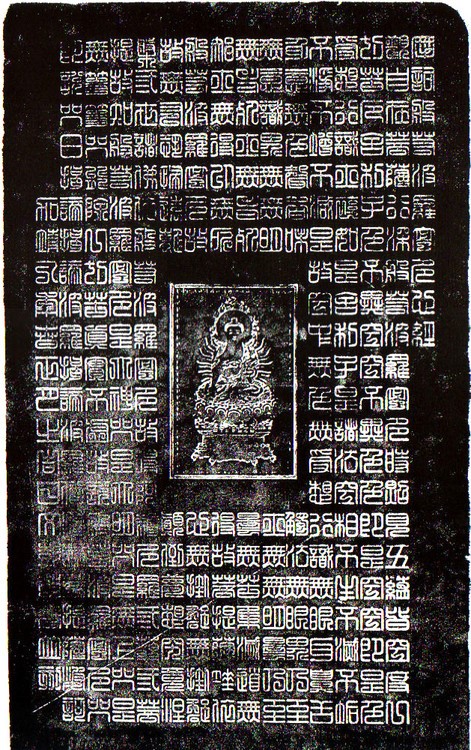
Avalokitesvara Bodhisattva, walking in the deep Prajnaparamita for a long time, saw that the five aggregates are empty, and survived all the hardships. Relics, color is not different from emptiness, emptiness is not different from color, color is emptiness, emptiness is color. Want to know that line, same is the case. Relics, all dharmas are empty, neither born nor destroyed, neither dirty nor pure, neither increasing nor decreasing. Therefore, there is no color in the air, no feelings, thoughts, and consciousness, no eyes, ears, nose, tongue, body and mind, colorless body, thoughts, tastes, and dharma. There is no vision, even the unconscious world, there is no ignorance, and there is no end of ignorance, and there is no old age and death, and there is no end of old age and death. There is no way to destroy the path of suffering, no wisdom, and no gain, because there is no gain. Bodhisattva, according to Prajnaparamita, has no worries. There are no obstacles, there is no fear, and we are far away from upside-down dreams, and we will reach nirvana. The Buddhas of the three generations, according to Prajnaparamita, achieved Ayuntarasamyaksambodhi. Therefore, we know that Prajna Paramita is a great divine mantra, a great Ming mantra, a supreme mantra, and an infinite mantra. It can eliminate all suffering and is true and not false. Therefore, the Prajnaparamita mantra is said. That is to say, he cursed:
Revealing the truth, uncovering the truth, Polo reveals the truth, Pāṇṭhāna reveals the truth, Bodhisattva reveals the truth.

